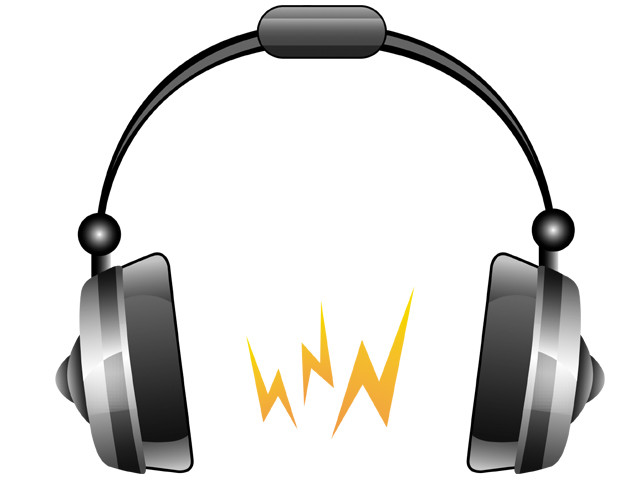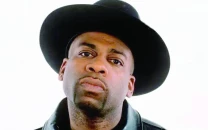All in the head
Is the growing digital culture among the youth turning them deaf?

Given the current ubiquity of personal media players — the iPod appeared almost a decade ago — many researchers attribute this widespread hearing loss to exposure to sound played loudly and regularly through headphones. (Earbuds, in particular, don’t cancel as much noise from outside as do headphones that rest on or around the ear, so earbud users typically listen at higher volume to drown out interference.) Indeed, the August report reinforces the findings of a 2008 European study of people who habitually blast MP3 players, including iPods and smart phones. According to that report, headphone users who listen to music at high volumes for more than an hour a day risk permanent hearing loss after five years.
Maybe the danger of digital culture to young people is not that they have hummingbird attention spans but that they are going deaf.
The history of headphones has always been one of unexpected uses and equally unexpected consequences. Headphones were invented a century ago — the brainchild of Nathaniel Baldwin, a tinkerer from Utah who grew frustrated when he couldn’t hear Mormon sermons over the noise of the crowds at the vast Salt Lake Tabernacle. Baldwin’s device, which was designed first as an amplifier, came to incorporate two sound receivers connected by an operator’s headband. Within each earphone was, according to legend, a mile of coiled copper wiring and a mica diaphragm to register the wire’s signals with vibrations. When the Navy put in an order for a hundred such Baldy Phones in 1910, Baldwin abandoned his kitchen workbench, hastily opened a factory and built the prosperous Baldwin Radio Company. His innovations were the basis of “sound powered” telephones, or phones that required no electricity, which were used during World War II.
It’s not incidental that Baldwin imagined headphones first as a way to block out crowd noise and hear sermons. Workers and soldiers have long used them to mute the din of machinery or artillery while receiving one-way orders from someone with a microphone. From the beginning, it seems, headphones have been a technology of submission (to commands) and denial (of commotion).
When World War II ended, submission-and-denial was exactly what returning veterans craved when they found themselves surrounded by the clamor and demands of the open-plan family rooms of the postwar suburbs. By then, they knew what device provided it. In the ‘50s, John C Koss invented a set of stereo headphones designed explicitly for personal music consumption. In that decade, according to Keir Keightley, a professor of media studies at the University of Western Ontario, middle-class men began shutting out their families with giant headphones and hi-fi equipment. Further, they recalled the sonar systems they saw at war.
The Walkman appeared in 1979, the invention of Sony, and headphones became part of a walking outfit. Headphones and earbuds are now used with MP3 players, mobile phones, tablet computers and laptops.
Most discussions of the transformation of music by digital technology focus on the production end. But headphones transform sound for the consumer too. Headphones are packed with technology. When an audio current passes through the device’s voice coil, it creates an alternating magnetic field that moves a stiff, light diaphragm. This produces sound. If you think about all the recordings, production tricks, conversions and compressions required to turn human voices and acoustic instruments into MP3 signals, and then add the coil-magnet-diaphragm magic in our headphones, it’s amazing that the intensely engineered frankensounds that hit our eardrums when we listen to iPhones are still called music.
Whatever you call it, children are listening to something on all these headphones — though “listening” is too limited a concept for all that headphones allow them to do. Indeed, the device seems to solve a real problem by simultaneously letting them have private auditory experiences and keeping shared spaces quiet. But the downside is plain, too: It’s anti-social. As Llewellyn Hinkes Jones put it not long ago in The Atlantic: “The shared experience of listening with others is not unlike the cultural rituals of communal eating. Music may not have the primal necessity of food, but it is something people commonly ingest together.”
Headphones work best for people who need or want to hear one sound story and no other; who don’t want to have to choose which sounds to listen to and which to ignore; and who don’t want their sounds overheard. Under these circumstances, headphones are extremely useful — and necessary for sound professionals, like intelligence and radio workers — but it’s a strange fact of our times that this rarefied experience of sound has become so common and widespread. In the name of living a sensory life, it’s worth letting sounds exist in their audio habitat more often, even if that means contending with interruptions and background sound.
Make it a New Year’s resolution, then, to use headphones less. Allow kids and spouses periodically to play music, audiobooks, videos, movie, television and radio audibly. Listen to what they’re listening to, and make them listen to your stuff. Escapism is great, and submission and denial, too, have their places. But sound thrives amid other sounds. And protecting our kids’ hearing is not just as important as protecting their brains; it is protecting their brains.
— NYT Syndication Services
Published in The Express Tribune, Sunday Magazine, January 16th, 2011.



















COMMENTS
Comments are moderated and generally will be posted if they are on-topic and not abusive.
For more information, please see our Comments FAQ